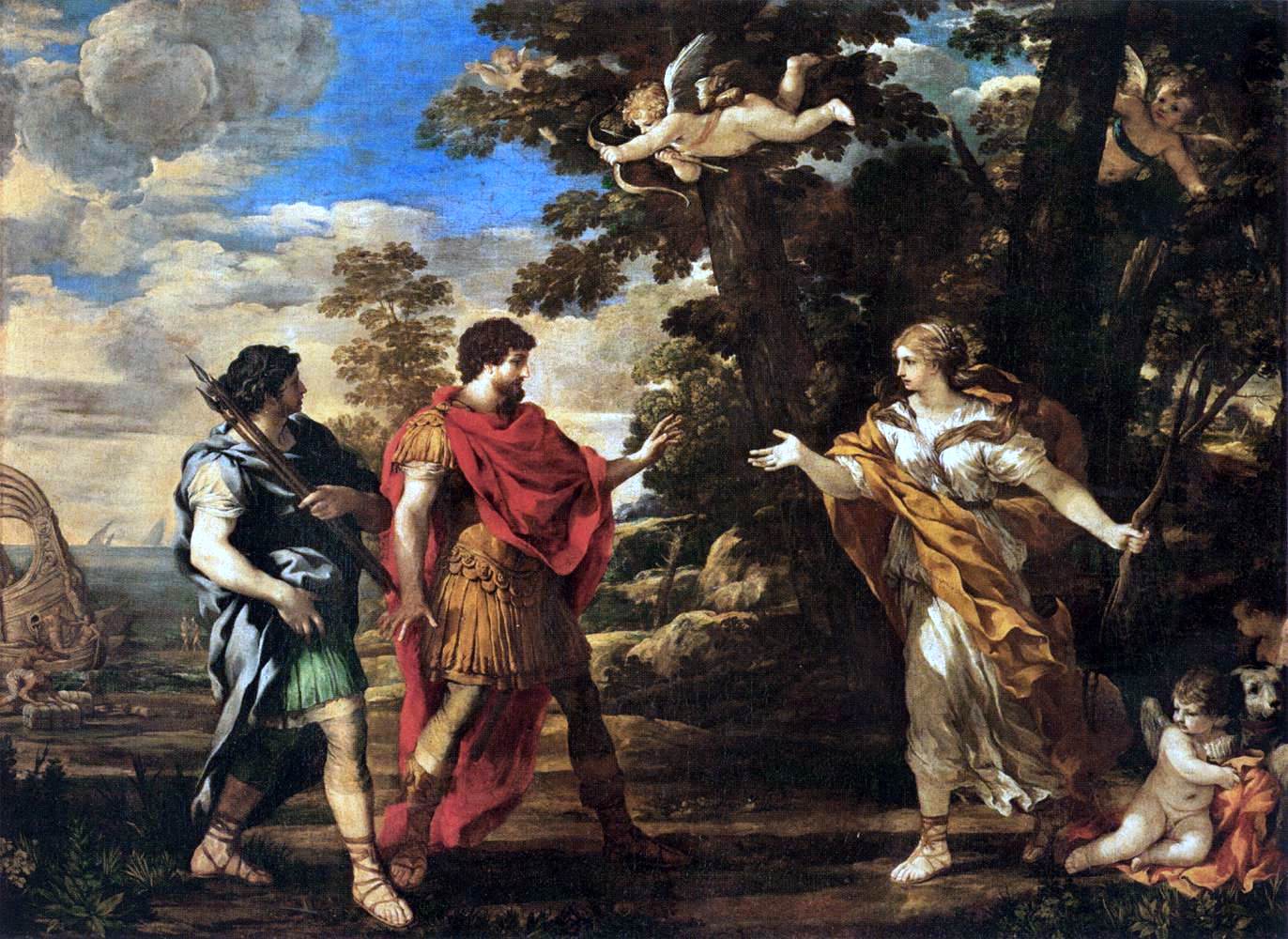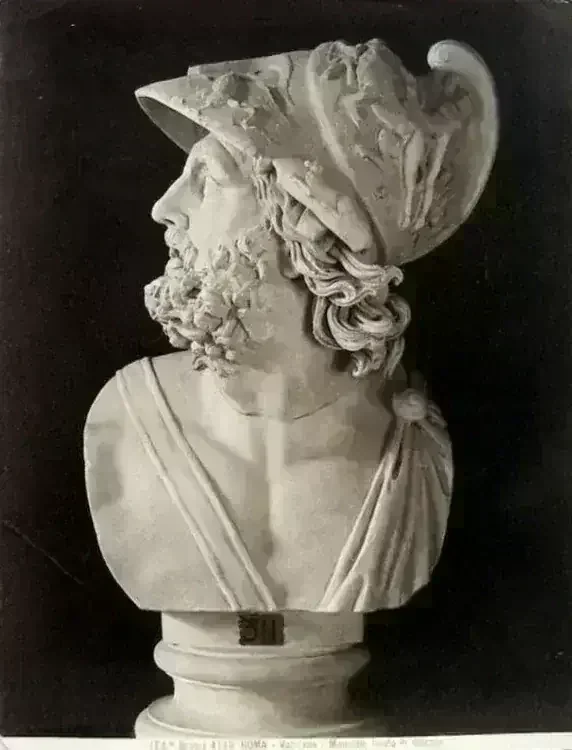Aeneas

In Greco-Roman mythology, Aeneas was a Trojan hero celebrated as both the son of the goddess Aphrodite (known as Venus in Roman tradition) and the mortal prince Anchises. Aeneas was born of divine and royal lineage—his father being a cousin of King Priam of Troy—making Aeneas second cousin to prominent figures like Hector and Paris. Though he plays only a minor role in Homer’s Iliad, Aeneas emerges in Roman mythology as the central figure of Virgil’s Aeneid and as a legendary forebear of Romulus and Remus, the founders of Rome. In this way, Aeneas is portrayed as the first true hero of the Roman people.
Aeneas’s origin is recounted in the Homeric Hymn to Aphrodite. In this myth, Zeus punishes Aphrodite—who often makes gods fall in love with mortals—by causing her to fall for Anchises, a prince of Dardania. Disguised as a mortal, Aphrodite seduces him near Mount Ida, and from their union Aeneas is conceived. She later reveals her divine identity, warns Anchises not to boast of their encounter, and entrusts the infant Aeneas to nymphs for safekeeping. In some versions, Anchises breaks his promise and boasts of the affair, leading Zeus to strike him with a thunderbolt that leaves him crippled. This detail explains why Aeneas is later depicted carrying his father from the burning ruins of Troy—a powerful image of filial piety.
In the Iliad, Aeneas is a capable and honorable warrior, leading the Dardanian allies of the Trojans and occasionally clashing with Greek heroes. His divine protection is evident throughout the epic: Aphrodite, Apollo, and even Poseidon intervene to save him from death, particularly from the deadly hands of Diomedes and Achilles. Poseidon’s rescue is especially striking, as he usually favors the Greeks but acknowledges Aeneas’s destiny to become king and preserve the Trojan lineage.
While Homer offers only glimpses of Aeneas’s future, later writers expanded on his fate. In Roman tradition, Aeneas becomes a survivor of Troy’s fall and a symbol of endurance and divine favor. He leads a band of refugees on a journey that ultimately culminates in the founding of the Latin people. His epic quest, told fully in the Aeneid, positions him as the mythic bridge between Troy and Rome.
Aeneas’s story shares thematic elements with broader mythological archetypes. Scholars like Bruce Louden have identified him as a figure spared from divine or national catastrophe due to his piety and righteousness, likened to Noah, Utnapishtim, or Baucis and Philemon. Ancient sources such as Pseudo-Apollodorus emphasize that Aeneas alone was spared by the Greeks because of his piety (pietas in Latin), a trait that defines his character throughout Roman literature.
Even in alternative Trojan war accounts, such as those by Dares Phrygius and Dictys of Crete, Aeneas maintains his heroic stature. Gaius Julius Hyginus, in his Fabulae, credits him with the deaths of 28 enemies during the war. Meanwhile, the archaeologist Heinrich Schliemann speculated that Aeneas may have been regarded as a royal ancestor by the historical rulers of Troy at the time Homer visited the region.
Over time, Aeneas came to embody the ideals of duty, endurance, and divine purpose—qualities the Romans prized in their cultural identity. His legacy as the pious hero who escapes destruction to lay the foundation for a new civilization became central to Rome’s myth of origin and imperial destiny.


